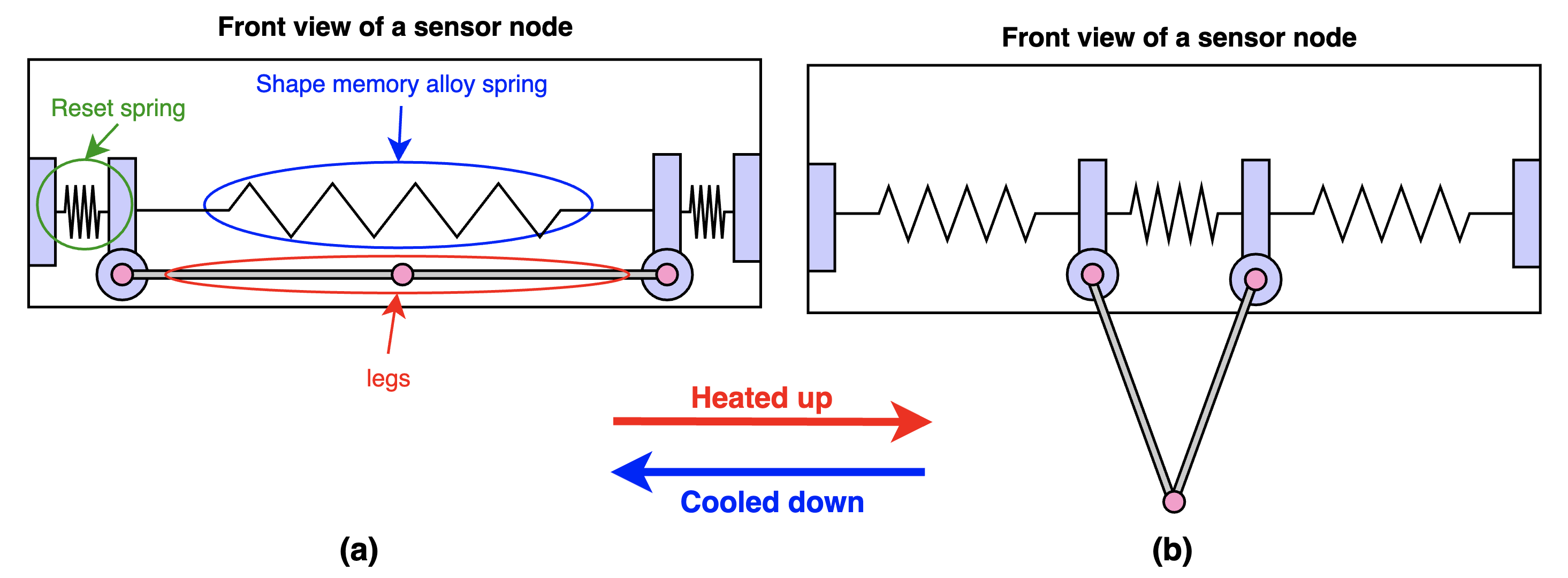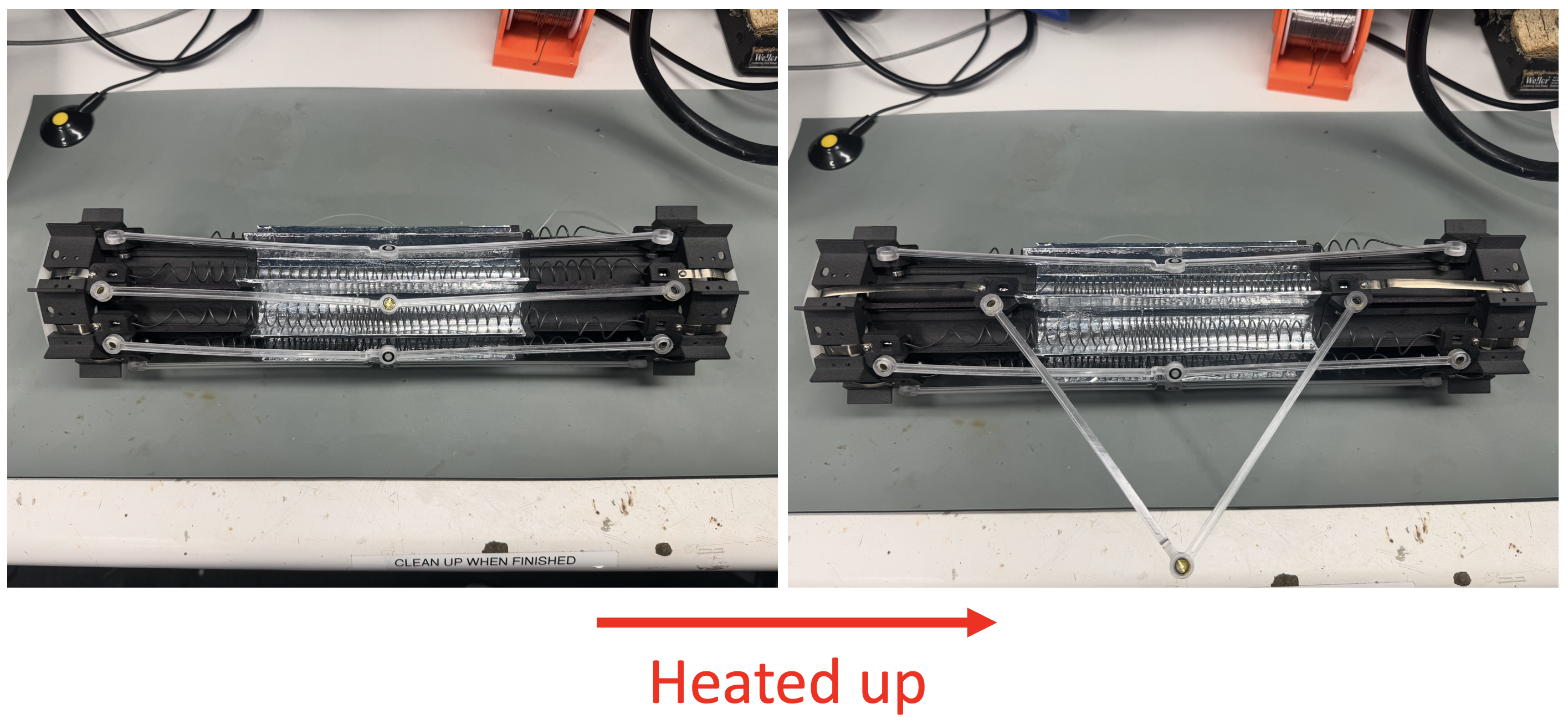Lunar Tumbleweed
Overview
For system working on the Moon, to get mobility, usually we need high-power consuming actuators, such as motors, to drive the system moving. However, these actuators consume a lot of power, which is very limited on the Moon. A low-power consuming mobility method is needed for small systems working on the Moon.
How about more extreme, a "power-free" mobility?The lunar Tumbleweed is a concept of "power-free" mobility for small wireless sensor nodes working on the Moon. The idea is inspired by the tumbleweed plant on the Earth. Unfortunately, there is no wind on the Moon, however, there is the sunlight that can be used to generate the mobility. The figure below shows how the lunar tumbleweed works:

(a) a Lunar tumbleweed sensor node is deployed on the lunar surface, one side is in sunshine and another side is in shadow. This naturally generates a temperature gradient across the device's surface (b) A special actuator with a bistable beam structure is used to actuate the device. The actuator bends outward when it is heated by the sunshine (c-d) The actuator pushes the node to roll (e) After rolling, the side with sunshine loses the direct irradiance, and the side that doesn't have the sunshine gets the direct irradiance and actuates the device to roll again. This process repeats and the device rolls on the lunar surface like a tumbleweed plant on the Earth.
Actuator design
A special actuator is designed with a bistable beam structure. The actuator is driven by a custom-made shape memory alloy (SMA) spring. When the SMA spring is heated, it contracts and pulls the bistable beam to bend outward. When the SMA spring cools down, the bistable beam snaps back to its original position. The bistable beam structure is used to amplify the small contraction of the SMA spring. The figure below shows the design of the actuator:

The figure belows shows the actuator prototype and its performance:

Experiments
A preliminary test of the actuator is conducted. A solar light illuminator is used to provide sunlight-like irradiance to the actuator. A reflector is used to change the direction of the light to simulate the irradiance incident angle in polar regions on the Moon. The video below shows the test setup and the test result:
More tests results and the paper is under preparation and will be updated here soon.